They both fled Haiti on parallel journeys, but 'arbitrary' enforcement at Texas border led to remarkably different fates
Marie Martine and Briyanne Jeanniton fled their native Haiti, traveled for years on parallel journeys across two continents before landing at the Texas border.
Their paths never crossed but, in March, they each made what they hoped would be their last leg: They surrendered to Border Patrol agents, one in El Paso, the other in Del Rio.
They met remarkably different fates.
Agents in Del Rio gave Jeanniton, 23, a “credible fear” screening that put her on a legal path to seek asylum — she acknowledged she was afraid to return to Haiti — and they released her to travel freely to a friend's apartment in West Palm Beach, Florida.
Agents in El Paso loaded Martine, 49, and husband Fanfan Jean into a van, dropped them at a downtown bridge to Juárez and told them to return to Mexico.
“I feel free,” Jeanniton said in a video call, using Spanish she acquired during time spent in Chile and traversing South and Central America, to Mexico. "I don’t know if you can understand me. Ten or 12 countries behind me! And when you arrive, you feel free. Like when a person was a slave and becomes free, because the journey is over.”
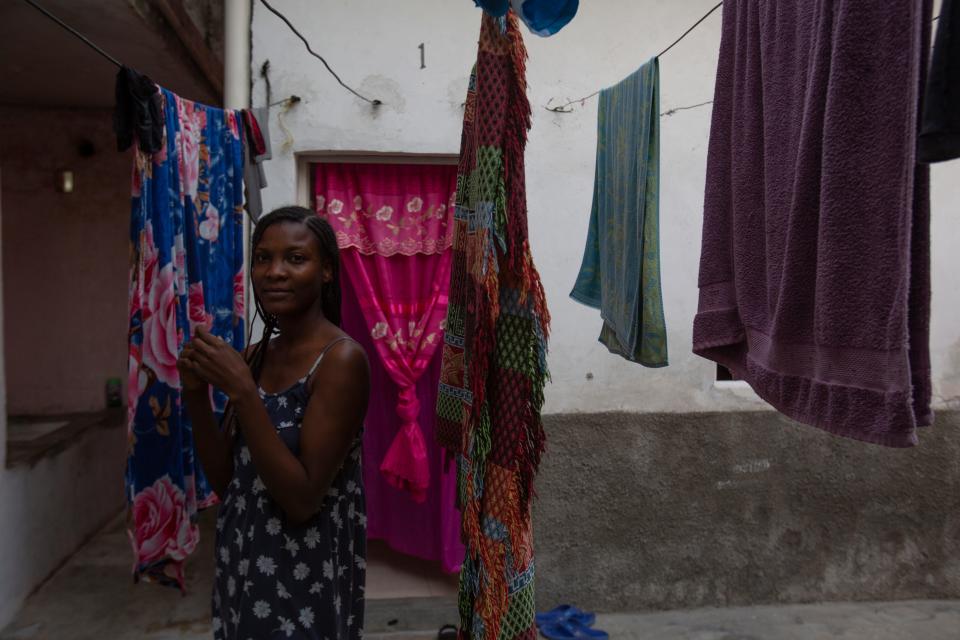
Back in Juárez, in a hastily rented room, Martine said her experience at the border was "mal, mal, mal" — very bad.
The Border Patrol "didn't ask me about Haiti," she said. "Haiti is very dangerous. If I go to Haiti, I could be killed. But they didn't ask me about Haiti. They only told me, 'You are going back to Mexico.'"
The U.S. asylum system ― whose dismantling by the Trump administration began with an Obama policy blocking Haitian asylum seekers in 2016 ― remains in disarray. As a result, asylum seekers are making strategic decisions about where to present their claims, and unequal encounters are playing out in Texas border cities from El Paso to Brownsville.
More on the border: Migrant encounters up 71% in March as Biden administration grapples with border
Border where chances are hit or miss
The White House has repeatedly said that the border is closed and that pandemic protocols that allow Border Patrol to quickly return migrants to Mexico — known as Title 42 — remain in effect.
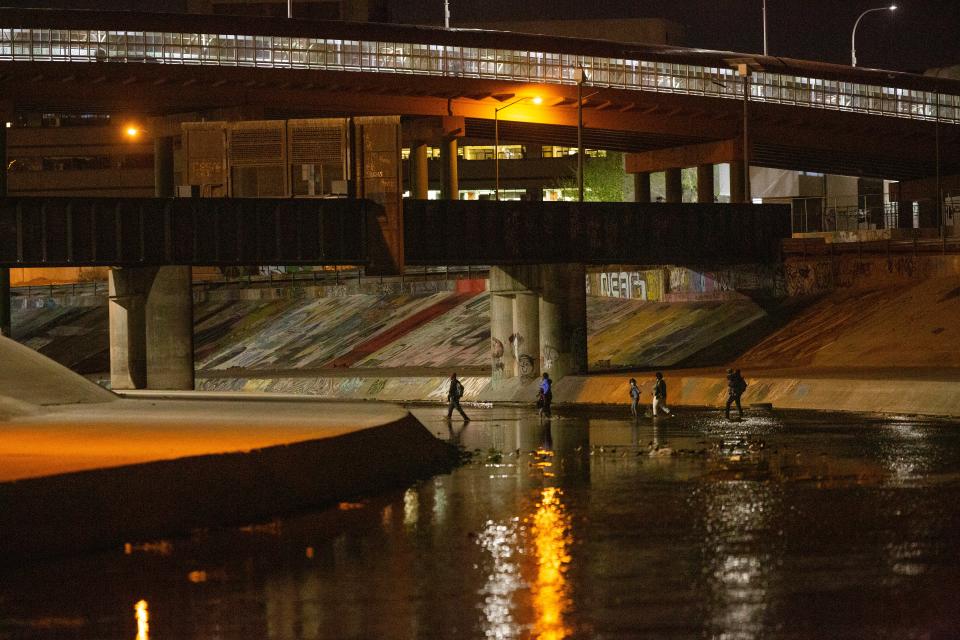
A U.S. Customs and Border Protection public affairs spokesperson said border agents evaluate a migrant's circumstances on a case-by-case basis, taking into account U.S. legal requirements, COVID-19 protocols, changes in Mexican law, U.S. holding capacity and and the health of the individual.
'All I want is a tranquil life': Asylum claims skyrocket in Mexico as Haitians flee to U.S. border
“The border is not open, and the vast majority of people are being returned under Title 42," the spokesman said in an emailed response to questions.
Separately, Border Patrol's El Paso Sector confirmed in an email that Haitian citizens have been returned to Mexico under Title 42.
Like Jeanniton and Martine, Haitians who have been waiting years in Mexico for an opportunity to seek asylum in the U.S. are now testing the Biden administration and a border where their chances are — evidently — hit or miss.
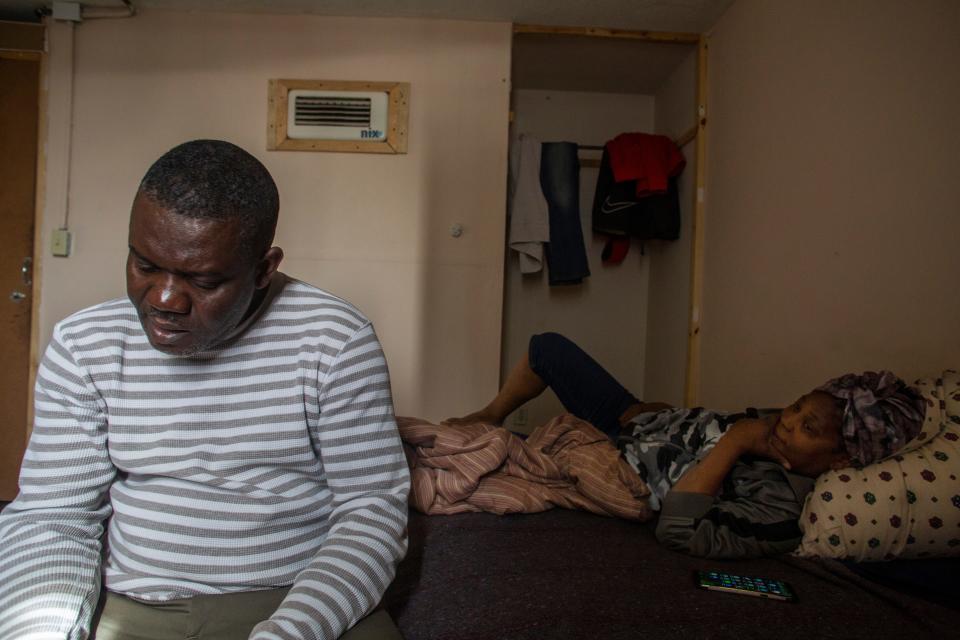
"They're being left with a risky decision on the off chance they will go the right (border) sector at the right time, and we have no explanation for who gets in and why," said Linda Rivas, executive director of the Las Americas Immigrant Advocacy Center in El Paso. "It is extremely arbitrary. It highlights that we don’t have a functional asylum system."
Mark Morgan, who served as acting CBP commissioner under Trump, called the Biden administration's uneven application of Title 42 along the border "absurd."
"Any time there is a policy or authority shift, it’s exploited," he said. "Either the smugglers are going to exploit that or the migrants are going to exploit that. Title 42 is not being applied evenly across the border. It shouldn’t depend on where you enter the Southwest border illegally what happens to you."
Jeanniton's calculation paid off. She left Border Patrol custody with a negative COVID-19 test and paperwork in hand requiring she meet with U.S. Immigration and Customs Enforcement. If not a guarantee that she could stay, she may have a chance to make her case.
Sent back to Mexico empty-handed, Martine was disappointed but undeterred.
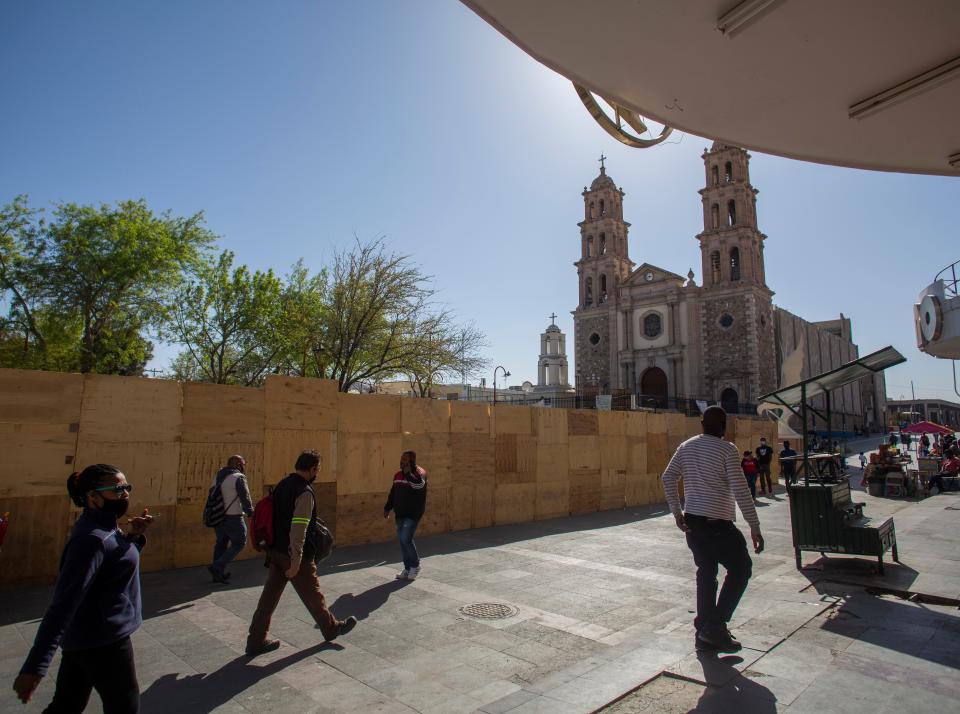
"I am thinking about checking another border," she said, employing a mix of Spanish and Portuguese acquired during long stints in Venezuela and Brazil and Mexico. "I'm going to wait a while to see how things go. I've been waiting here so long. I want to cross."
A Guatemalan father brought his 10-year-old daughter to the U.S.-Mexico border.: He learned to regret it.
Well-worn route north
For decades Haitians have left their half-island nation, the poorest in the western hemisphere, in search of stability.
They fled the back-to-back dictatorships of François Duvalier and son Jean-Claude Duvalier in the 1970s, then the fallout of the 1991 coup d'etat that ousted democratically elected President Jean-Bertrand Aristide. Then came the 7.0 earthquake in 2010 that flattened much of capital city Port-au-Prince, which was followed by a destructive Hurricane Matthew in 2016. The country is now on the verge of collapse, as President Jovenel Moise has consolidated power and dissolved core governing institutions; anti-government protests have become widespread and violent.

Martine left Haiti in 2008 for Venezuela, then in 2014 to Brazil. Jeanniton left in 2017 for Chile.
At the time, Brazil and Chile had fast-growing economies and welcomed Haitian labor; the governments provided work permits and visas. Both women made a life for themselves in growing Haitian communities in each country.
But the Chilean and Brazilian economies soon contracted, and as civil unrest and anti-immigrant fervor took hold, Haitian workers were among the first to lose their jobs.
Martine left for Mexico in 2016. Jeanniton left for Mexico two years later.
They each followed a route well-worn by their compatriots, Cubans and others with limited means: They walked the jungle of the isthmus that connects Colombia with Panama, took buses or rides across Central America to the Guatemala-Mexico border.

From ‘zero tolerance’ to now: How America’s migrant policies have changed in the Trump and Biden years
They were among the more than 13,000 Haitian nationals who filed applications for asylum, or what's known in Mexico as refugee status, from 2016 through the first two months of 2021, according to COMAR, Mexico's refugee commission.
Mexico's denial rate for those applications by Haitians hovers around 90%, according to the U.S.-based Haitian Bridge Alliance. But the country gave many Haitians temporary permission to live and work in the country, Martine and Jeanniton included.
With legal status to travel and work in Mexico, thousands made their way to Mexico's northern border where jobs are plentiful — if poorly paid — and the U.S. appears within reach.
Haitians at forefront of restrictive policies
Martine and her husband landed in Tijuana in 2016 where they found factory jobs assembling TVs for American consumers. Jean worked a 12-hour night shift for $85 a week.
Martine rubbed her fingers together to emphasize how little money they earned.
"Working here you can't get ahead," she said, sitting in a restaurant in downtown Juárez. "You work a lot. You earn a little."
Haitians settled in to cities south of the California border — Tijuana and Mexicali — in large part because the United States was closed to them.
By the time Martine arrived in Tijuana, the Obama administration had blocked the ports of entry to asylum seekers with a practice immigrant advocates call "metering."
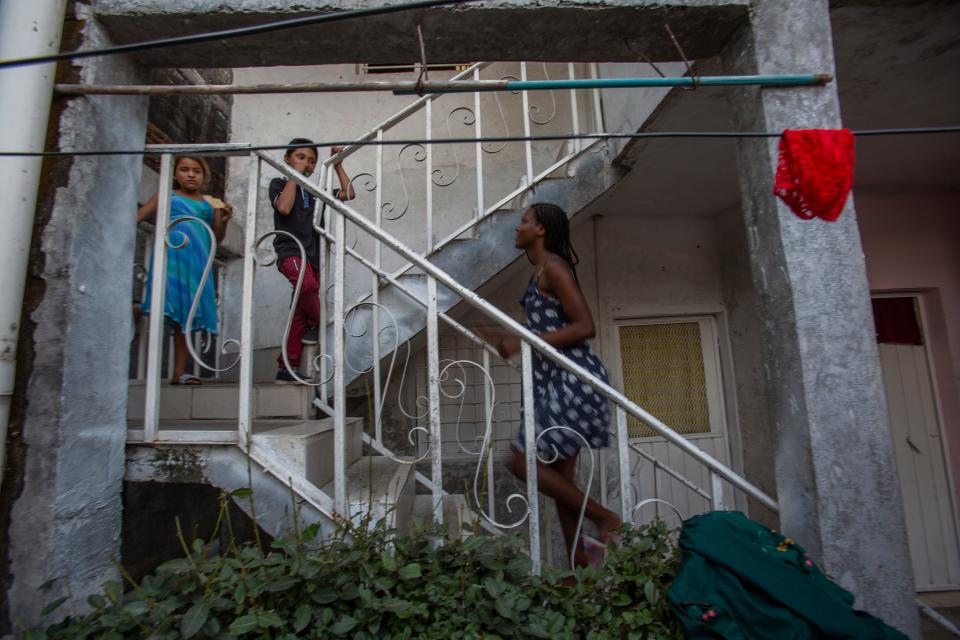
“Haitians unfortunately have often been at the forefront of asylum restriction policies over the last five or six years,” said Aaron Reichlin-Melnick, policy counsel at the nonprofit American Immigration Counsel. “The whole concept of metering — of restricting access to asylum at ports of entry — began in San Diego in response to the arrival of Haitians."
The practice spread to every port of entry at the U.S. border and remains in effect.
"It leaves people with one option: to cross in a way that is deadly, through a river that is unforgiving, over a wall that is higher than it has ever been," Rivas said. "You have to contemplate death before you make the decision."
Martine and Jean didn't try to cross the border without permission, not yet. They waited, hoping for a change in U.S. policy.
Slim chances for asylum seekers
Around the time Joe Biden was elected president in November, Jeanniton headed north toward the U.S. border to Chihuahua City about four hours south of Juárez. She had spent more than a year in southern Mexico, in migratory limbo in the humid border city of Tapachula in Mexico's southern Chiapas state.
The U.S. was her longed-for destination, she told the El Paso Times in Tapachula in early 2020.
Biden sticks to infrastructure pitch: Pressure builds on immigration, gun control

More than 680,000 Haitian immigrants live in the U.S., according to the non-partisan Migration Policy Institute. More than 55,000 benefited from humanitarian protection afforded them through Temporary Protected Status; others have sought asylum or other legal status.
Haitians are the sixth-largest group of asylum seekers in the U.S. behind those from China, El Salvador, Guatemala, Honduras and Mexico.
Their chances of winning asylum are comparatively low.
U.S. immigration judges denied 82%, or 26,401 of 32,129 asylum petitions by Haitian nationals between 2001 and 2021, according to data published by the Transactional Records Access Clearinghouse at Syracuse University.

The denial rate in Haitian cases is on par with what Central Americans face and is much higher than for applicants from China (33%), Colombia (64%) or India (45%), according to the TRAC data.
'You're going to cross alone'
Martine, who has family in Georgia, has gotten most of her information about the border by word of mouth, from other Haitians in the U.S. and in Mexico.
She said she's afraid to be sent back to Haiti, but asked whether she wanted protection under the U.S. asylum system, she answered that she reads the Bible.
"Only God can offer protection," she said.
Despite her failed attempt to reach the U.S., returning to Tijuana isn't an option, she said. She and Jean sold the few things they had. They would look ahead.
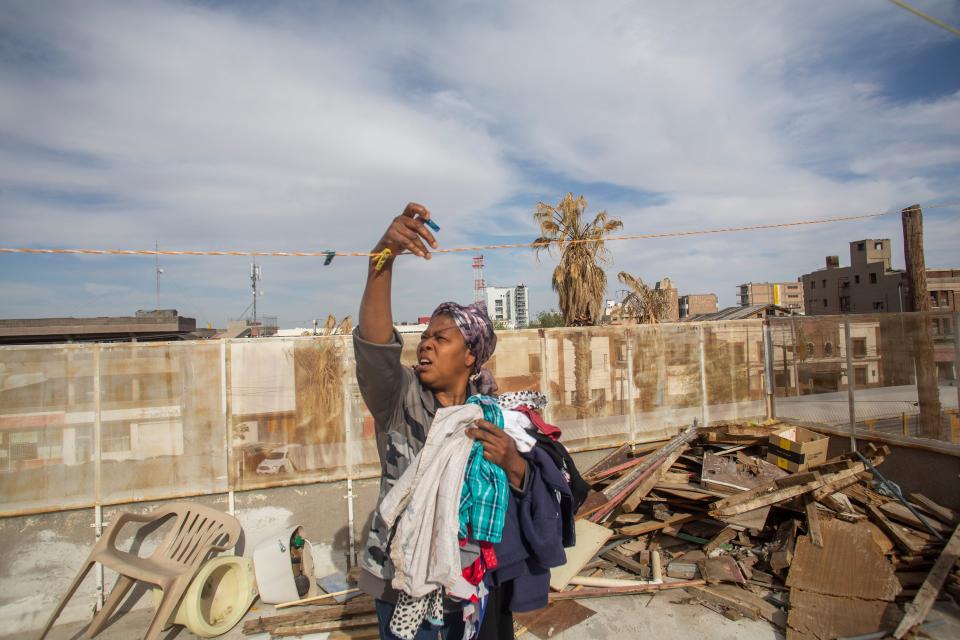
"Conditions in Mexico are not good," said Nicole Phillips, legal director of the Haitian Bridge Alliance, a nonprofit that advocates for Haitian immigrants. "With COVID-19, a lot of people lost their jobs or whatever businesses they staffed fell apart. They fell on hard times economically. The ports of entry are completely closed (to asylum seekers) because of Title 42. There has been no explanation in Haitian Creole about what is happening."
Jeanniton learned what she could from other Haitians on the move.
U.S.-Mexico border: Some migrant families are taken in, others 'kicked out'
In March, she traveled to Ciudad Acuña, across the border from the rural community of Del Rio, Texas, where the Rio Grande runs wide and deep and dangerous. Three months earlier, Border Patrol in Del Rio sector recovered the body of a pregnant Haitian woman, believed to have drowned.
Jeanniton found a "guide," she said, who showed her the way.
"He told me, 'you're going to cross alone,'" she said.
She waded into the river. She carried her cell phone and a change of clothes.
"There are days that people lose their life," she said. "You know that I am tall, and when I crossed, the water came up to my waist. You have to be so careful not to fall."
Rising migration, ongoing deportations
Biden promised a more "humanitarian approach" to immigration enforcement. To many would-be immigrants in the Americas, the message sounded something like opportunity.

The administration is now struggling to contain increased unauthorized immigration at the Southwest border.
Border Patrol apprehensions and encounters swelled to more 100,000 in February, up from roughly 37,000 in February year ago, according to CBP data. The number of Border Patrol apprehensions and encounters — which include numerous repeat crossings — has risen each of the past 10 months.
Haitian migration presents special challenges.
The country carries the U.S. State Department's most extreme travel warning due to "crime, civil unrest, kidnapping and COVID-19."
"Because of the political turmoil and crises that is happening in the country, nobody should be deported to Haiti right now," Phillips said. "It’s as unsafe to travel to Haiti as it is to travel to Afghanistan or Somalia, according to the Department of State."
After briefly halting deportation flights to Haiti, U.S. Immigration and Customs Enforcement resumed Title 42 returns and deportations to Haiti.
"There have been a couple a week, with at least 1,400 people deported, since Feb. 1," Phillips, the Haitian Bridge Alliance legal director, said. "On those planes are some Haitians who were convicted of a crime, but the vast majority — 95 or 99% are Title 42 people.
Morgan, the former acting CBP chief, said he worries that the hit-or-miss application of Title 42 is going to exacerbate unauthorized migration in areas where Mexico's capacity to take back expelled migrants is limited and Border Patrol facilities are overcrowded.
"You’re going to see those areas that are already the epicenter, it’s just going to get worse," he said. "Regardless of where you stand on the politics, there was a better way to undo Trump policies."
'You see the lights of the country'
Jeanniton quickly settled into a friend's apartment in West Palm Beach. Resting on a pale pink blanket, sunshine streaming through a window, she said she felt a combination of exhaustion and relief.
She spoke giddily, remembering. "On the first bus, traveling at night," she said of the trip across Texas, Louisiana, Mississippi and Alabama to Florida, "you see the lights of the country, like it was a movie."
"There are beautiful cities in every country," she said. "But the United States is the United States!"
In the weeks ahead she planned to find a job and check in with ICE.
"You have to go to the appointments," she said.
In Juárez, in late March, Martine sat on a concrete bench across from where she and her husband briefly stayed when they arrived from Tijuana, the Hotel Bombín, whose $25-a-night rooms are three blocks from the U.S. border next to a night-spot called “El Faro Ladies Bar."
Her husband and a cousin walked up with to-go boxes of Church's fried chicken and biscuits for breakfast.
They couldn't afford another night in the hotel. Martine worried out loud about where they would go and when — or where — their journey would end.
Lauren Villagran can be reached at lvillagran@elpasotimes.com.
This article originally appeared on El Paso Times: Haitian migrants put Joe Biden's immigration policies to test in Texas

